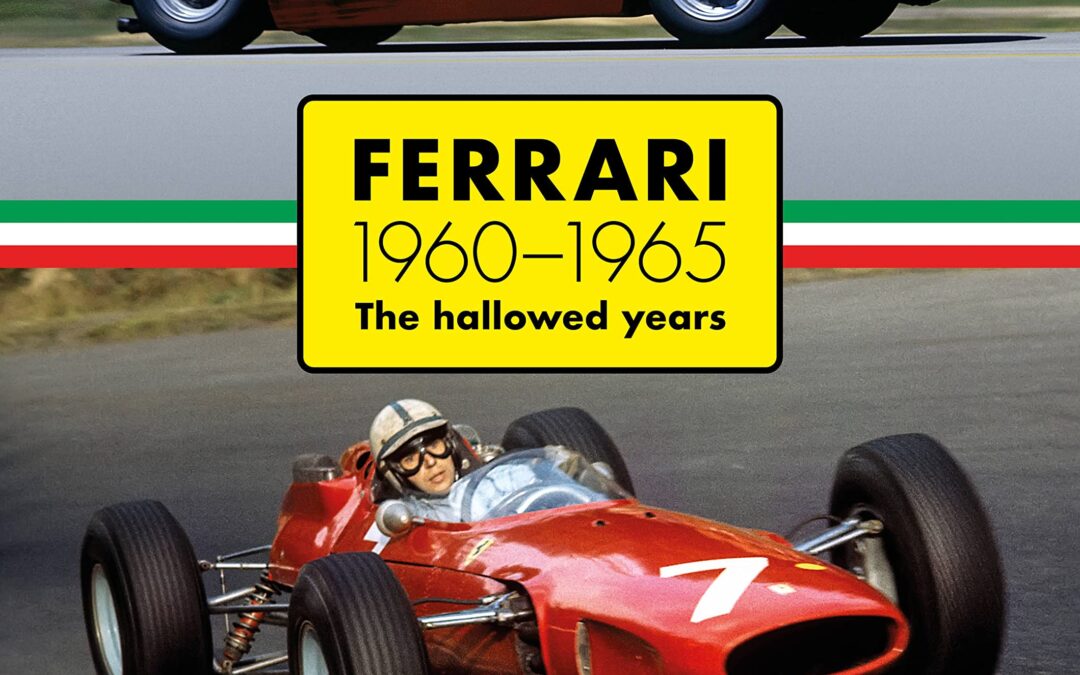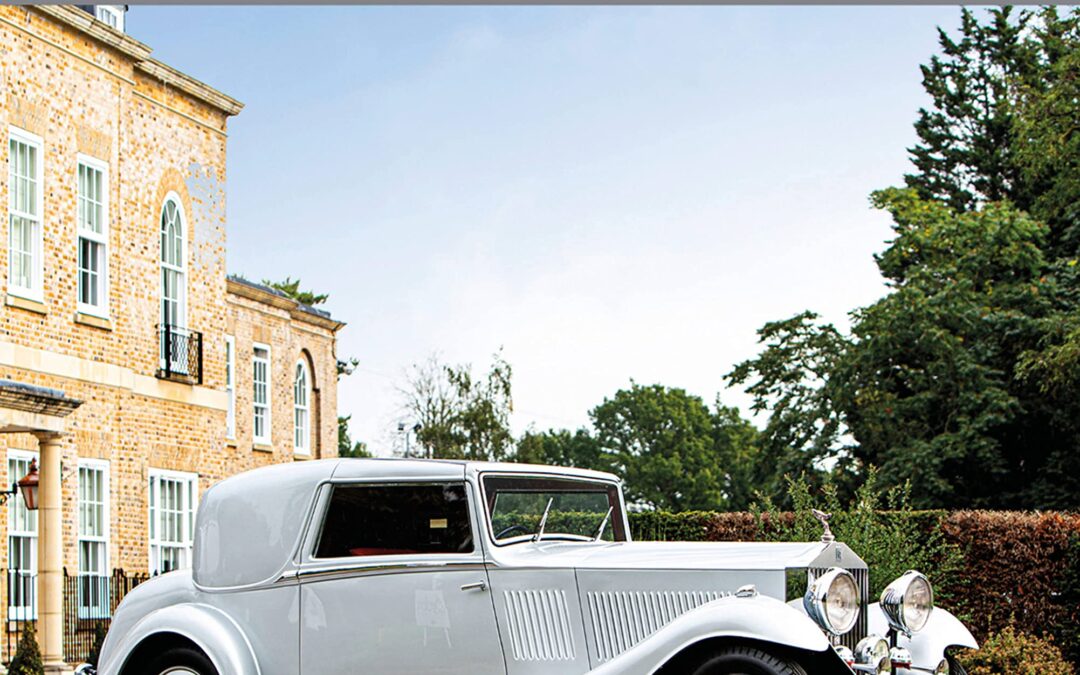
When Rolls-Royce introduced its new junior model, the Twenty, in 1922, there was no question of the company supplying coachwork for it. That was the job of the myriad specialist coachbuilding firms, large and small, both in Britain and overseas. Customers went to a coachbuilder of their choice, asked for what they wanted, and got it. It was a system that remained unchanged in principle throughout the period, as the Twenty gave way to the 20/25, that model in turn was succeeded by the 25/30, and the Wraith became the final junior Rolls-Royce before the Second World War brought a great and glamorous era to an end.
From the relatively well-known Abbott of Farnham, to the little-known Wyllie & Lochhead in Glasgow, British coachbuilders across the country stepped up to the plate and delivered their best on these chassis. Among them, great names such as Barker, Gurney Nutting, HJ Mulliner and Park Ward led the field with some outstanding designs, many of them produced in small quantities (but always with individual touches). Outside the British Isles, but in far smaller numbers, there were bodies from the likes of Kellner and Saoutchik in France, Erdmann & Rossi in Germany, Gangloff in Switzerland, and Brewster in the USA.
The work of all these coachbuilders and many more is covered in this book, which for ease of understanding divides up each coachbuilder’s creations according to the host chassis and the different styles – saloon, limousine, drophead coupé, and so on. Rolls-Royce owners will particularly appreciate the inclusion of chassis numbers for all the cars bodied by each coachbuilder, a feature which makes this book a valuable reference work as well as a visual treat.
With well over 250 photographs, many in colour by distinguished photographer Simon Clay, this book celebrates the style and flair of a bygone era, and provides a vital fund of information for the many enthusiasts and owners who care about these fine cars today.
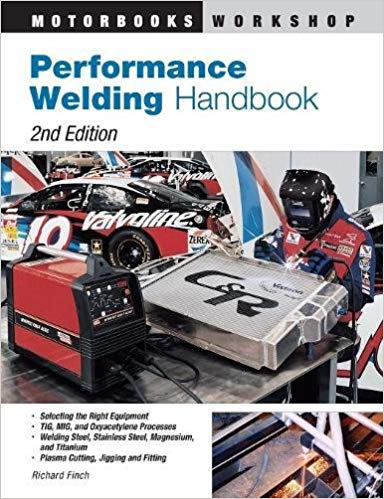
Metal fabricators of every ilk, whether they’re working on race cars, experimental aircraft, or custom motorcycles, will benefit from this updated guide to top-quality welding. Performance Welding demonstrates the newest fabricating techniques and covers the latest in welding equipment. This complete guide written by NASA welding consultant Richard Finch helps a fabricator select the proper equipment, prepare jigs, and effectively weld 4130 steel, stainless steel, aluminum, and magnesium. It also covers plasma cutting, the technique used extensively on Monster Garage that has revolutionized metal working. 2nd ed.
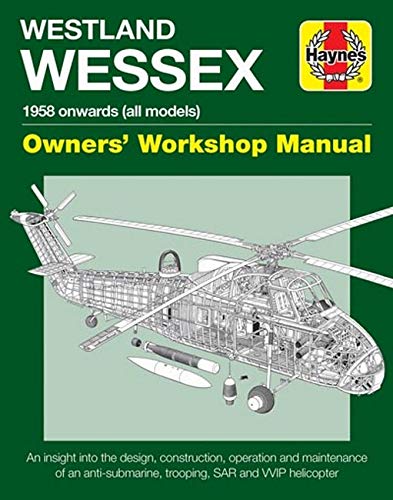
An insight into the design, construction, operation and maintenance of an … SAR and WIP helicopter (Haynes Manuals)
With a full and active service life of more than 40 years with the Royal Navy and the RAF, the Westland Wessex was one of the most versatile helicopters of the Cold War era. As a British-built turbine-powered development of the American Sikorsky H-34, the Westland Wessex was developed and produced under license by Westland Aircraft (later Westland Helicopters). One of the main differences from Sikorsky’s H-34 was the replacement of the piston-engine power plant with a turboshaft engine. The Wessex was the first helicopter to be produced in large numbers that made use of a gas turbine engine. Early models were powered by a single Napier Gazelle engine, while later builds used a pair of Rolls-Royce Gnome engines.
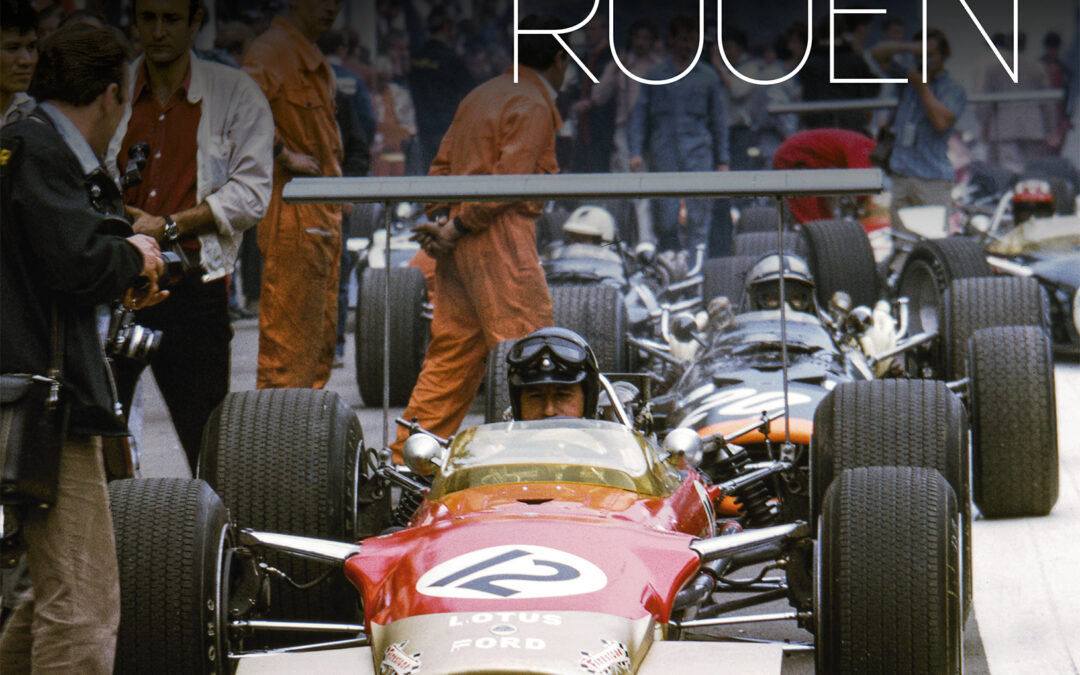
The story of a race – A race in history
This book is part of a new collection of books that unveils « freeze-frames » from the great movie of motor racing history. Its purpose is to explore a particular weekend, the choice of which depends above all on the authors’ ability to gather the most original and complete documentation possible: photos, plans, programs, drawings, period reports and testimonies.
All the historical disciplines are likely to be approached: F1, F2, F3, FJ, FF, sport-prototypes, GT, touring, cups of mark, rally, etc. If the program includes other events of a different nature (motorcycling, cycling…), they are reported with the same concern for precision.
The considerable preparatory work required to produce such works means that each author has had to rely on other contributors to benefit from the pooling of personal networks and rare documentary resources. It is thanks to their remarkable collaborative spirit that this project was possible.
July 1968 – The French Grand Prix succeeds the ACF Grand Prix on the famous circuit of Rouen-Les Essarts. The program is ambitious with the races of R8 Gordini, Formula France, F3 and F1. Unpublished documents, testimonies, never released photos shed a new light on this race weekend mixed with joy and tears. Hear the roar of the V12s and the blaze of the V8s, meet Rindt, Stewart, Hill, Brabham, Ickx, Rodriguez, Beltoise or Schlesser and let yourself be carried away by the story of this Grand Prix.
Text in English and French
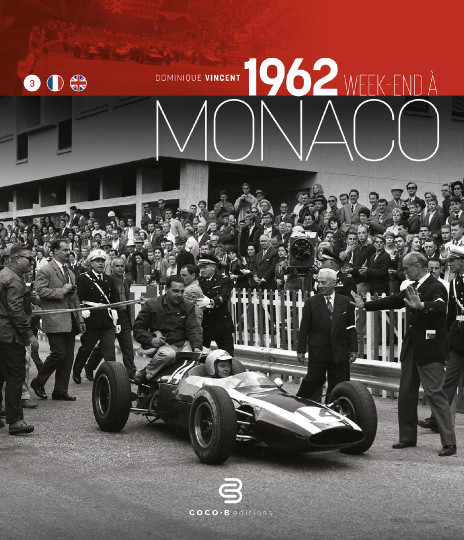
The story of a race – A race in history
This book is part of a new collection of books that unveils « freeze-frames » from the great movie of motor racing history. Its purpose is to explore a particular weekend, the choice of which depends above all on the authors’ ability to gather the most original and complete documentation possible: photos, plans, programs, drawings, period reports and testimonies.
All the historical disciplines are likely to be approached: F1, F2, F3, FJ, FF, sport-prototypes, GT, touring, cups of mark, rally, etc. If the program includes other events of a different nature (motorcycling, cycling…), they are reported with the same concern for precision.
The considerable preparatory work required to produce such works means that each author has had to rely on other contributors to benefit from the pooling of personal networks and rare documentary resources. It is thanks to their remarkable collaborative spirit that this project was possible.
An exceptional iconography at the service of the most prestigious F1 Grand Prix of the season, three Formula Junior races finally revealed thanks to unpublished documents, the presence of Clark, Brabham, Gurney, McLaren, G. Hill, P. Hill, Surtees, Bandini, Siffert and Trintignant at the wheel of the mythical Ferraris, Coopers, Lotuses, Porsches, BRMs and Lolas; the participation of the iconic Lotus 25 with monocoque chassis; these are just some of the ingredients of the spicy menu that we are proposing you to enjoy.
Text in English and French
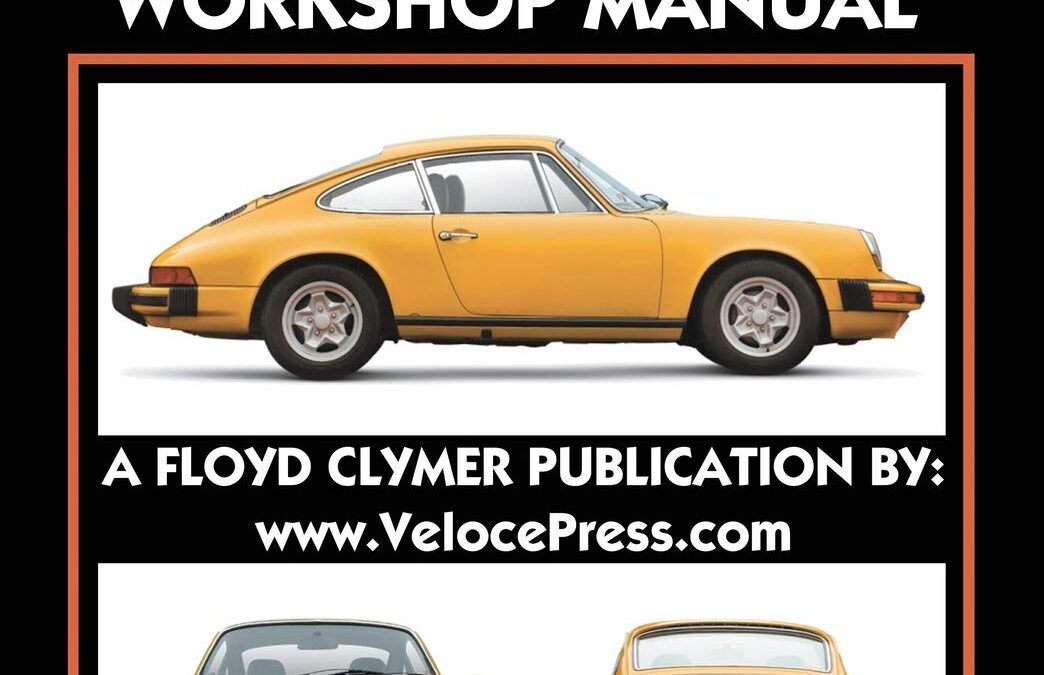
Updated from its previous format to include the later 3.2 Litre models through 1989. This Floyd Clymer publication includes complete technical data, service and maintenance information and comprehensive detailed instructions for the repair and overhaul of all major and minor mechanical and electrical components for the 1973 to 1989 Porsche 911G Series, 2.7, 3.0 and the 3.2 Litre models.
In its original format, this manual covered the Porsche 911 models through the 1978 model year. However, additional information for the earlier 2.7 and 3.0 Litre models that was not available at the time the original manual was published, is now included or appended to each chapter in this revised publication.
While this manual focuses on the 1973-1989 G series 911, much of the information is also applicable to the earlier 2.4 Litre (1971-73) models destined for the U.S.A., Australia, Japan and Canada that, due to emission requirements, were fitted with Bosch mechanical fuel injection (FIP). Consequently, this manual will also be of interest to owners of those 2.4 litre fuel injected models.
The manual is broken down into the following sections: Engine, Fuel System including Bosch mechanical fuel injection (FIP) continuous injection (CIS) and digital fuel injection (DME). Ignition Systems including Capacitive Discharge CDS, CDI and DME, Cooling, Heating & Exhaust Emission Systems, Clutch, Manual Transmission & Sportomatic Transmission, Rear Suspension & Drive Axles, Front Suspension, Steering, Brakes, Electrical System and Body. There is also an appendix to the rear of the manual that includes Technical Specifications and Wiring Diagrams.
While reprints of the factory manual are readily available, they are relatively expensive and we are pleased to be able to offer this reasonably priced alternative as a service to all 1973-1989 Porsche 911 enthusiasts worldwide.
248 pages, 311 illustrations plus an additional 66 pages of wiring diagrams, size 8.25 x 10.75 inches
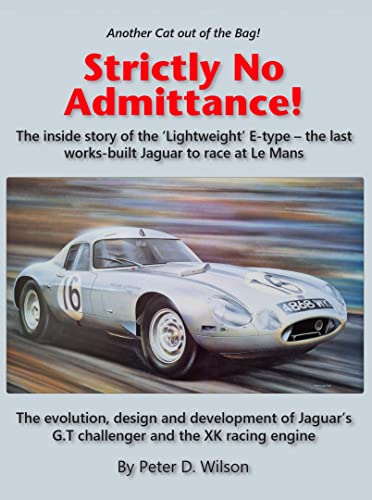
This impressive, large format book tells the inside story of the ‘Lightweight’ E-types. Built just in 1963, they are now amongst the rarest and most desirable of the race cars which came from Jaguar’s famous Competition Department – to which indeed there was ‘Strictly No Admittance’ for ordinary mortals! The book covers the evolution, design and development of Jaguar’s G.T. challenger and its XK racing engine. It is written by automotive engineer Peter Wilson who himself worked in the Competition Department throughout the period, where, together with his colleagues, helped build, and develop the production E-type through to its final form – the highly competitive and successful ‘Lightweight’ E-type. Peter’s remarkable recall of those events 60 or more years ago is reinforced by the hundreds of hours he spent in the Jaguar Daimler Heritage Trust’s impressive archives, and by many conversations with his former colleagues at Jaguar. The result is a book of astonishing detail (every single engine ever used by the factory in Lightweight E-types is, for example, identified and fully documented), while Peter’s account of how the car evolved from previous models, and the technicalities of how the engine, transmissions, brakes and bodywork were built and developed, are recorded in unprecedented detail. “The Lightweight E-type was created under the aegis of Jaguar’s founder, Sir William Lyons, and his engineering director William Heynes CBE”, writes publisher Paul Skilleter. “But the cars needed to be built and maintained, and Peter takes us into that ‘holy of holies’ and introduces us to the men who created the Lightweight E-type ‘in the metal’. “However, in successfully persuading Peter Wilson to follow up his XJ13 book with one on the Lightweight E-type, I hadn’t realised what I had let myself in for… The sheer quantity of words, graphs, diagrams and pictures which Peter presented me with was breathtaking – as was also the huge depth of the research clearly
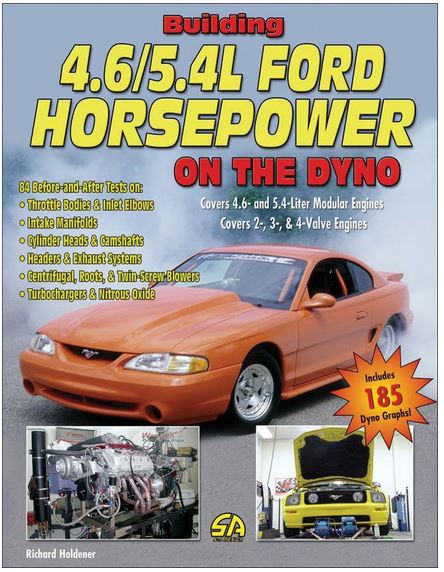
The 4.6- and 5.4-liter modular Ford engines are finally catching up with the legendary 5.0L in terms of aftermarket support and performance parts availability. Having a lot of parts to choose from is great for the enthusiast, but it can also make it harder to figure out what parts and modifications will work best. Building 4.6/5.4L Ford Horsepower on the Dyno takes the guesswork out of modification and parts selection by showing you the types of horsepower and torque gains expected by each modification.
Author Richard Holdener uses over 340 photos and 185 back-to-back dyno graphs to show you which parts increase horsepower and torque, and which parts don’t deliver on their promises. Unlike sources that only give you peak numbers and gains, Building 4.6/5.4L Ford Horsepower on the Dyno includes complete before-and-after dyno graphs, so you can see where in the RPM range these parts make (or lose) the most horsepower and torque. Holdener covers upgrades for 2-, 3-, and 4-valve modular engines, with chapters on throttle bodies and inlet elbows, intake manifolds, cylinder heads, camshafts, nitrous oxide, supercharging, turbocharging, headers, exhaust systems, and complete engine buildups.
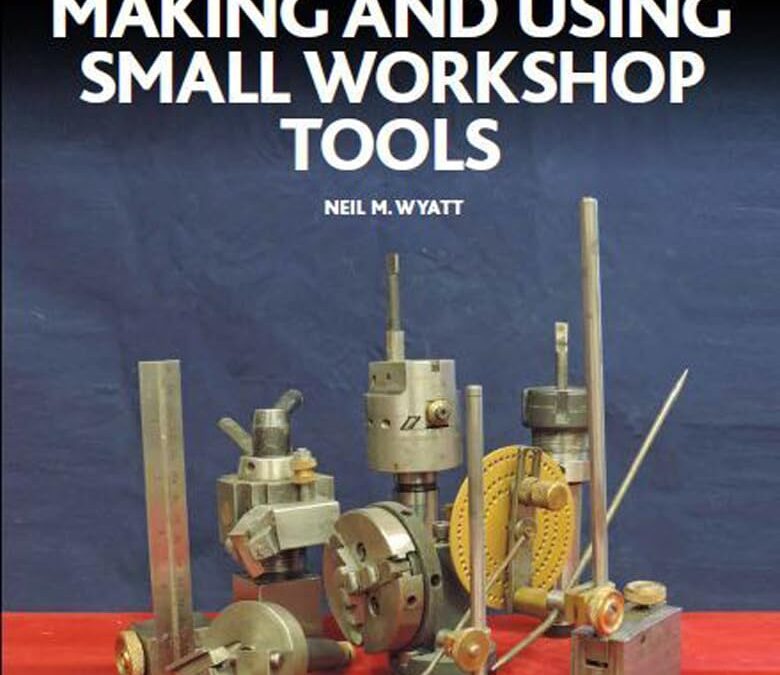
While pride of place usually goes to a lathe or milling machine, any workshop worthy of the name will have a host of hand tools and accessories to tackle a vast range of other tasks. Yet these are often supplied without detailed instructions, or even any guidance at all. Who has ever seen an instruction manual for a file? However, with the right advice, you can get better results, make your tools last much longer and work faster with less effort.
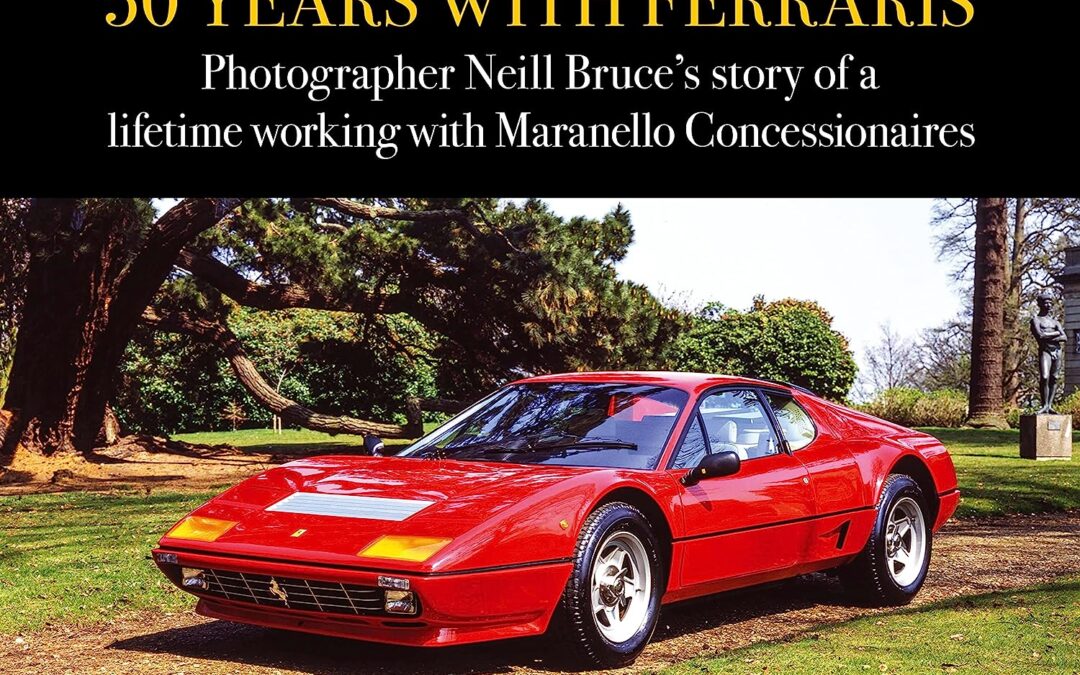
50 Years with Ferraris takes the reader behind the scenes at Maranello Concessionaires Ltd, Britain’s famous Surrey-based importer of Ferraris founded by Colonel Ronnie Hoare.
When Neill Bruce first photographed a Ferrari road car, a Dino 246 GT, in 1971, his work so impressed the powers-that-be at Maranello Concessionaires that they commissioned him to do all their promotional photography thereafter. Whether shooting production cars, factory scenes or motor show stands, he has been in Ferrari’s orbit ever since.
- Top-quality photography, originally shot on large-format film and reproduced to today’s highest standards on gloss art paper.
- Road cars of the 1970s, including Dino 246 GT, 365 GTC4, 365 GTB4 ‘Daytona’, 365 GT4 Berlinetta Boxer, 308 GT4 2+2 and 308 GTB.
- Evocative photography of a visit to the Maranello factory in 1973, including a meeting with Enzo Ferrari and tours of the main factory, Scaglietti’s body-manufacturing facility and the Fiorano test track.
- Road cars of the 1980s, including 400i, BB 512i, Mondial QV Cabriolet, Testarossa, 288 GTO and 328 GTB.
- Inside the Maranello Concessionaires workshops, showing all sorts of fascinating scenes such as servicing, body repair and the paint shop.
- Road cars of the 1990s, including F40, 412, 348 ts, Mondial t, 512 TR, 456 GT 2+2 and 348 Spider.
- Insights into the techniques and procedures involved in car photography.
The author presents some of his best pictures — the great majority in colour — and tells engaging stories about how they came about, including some of the mishaps along the way.
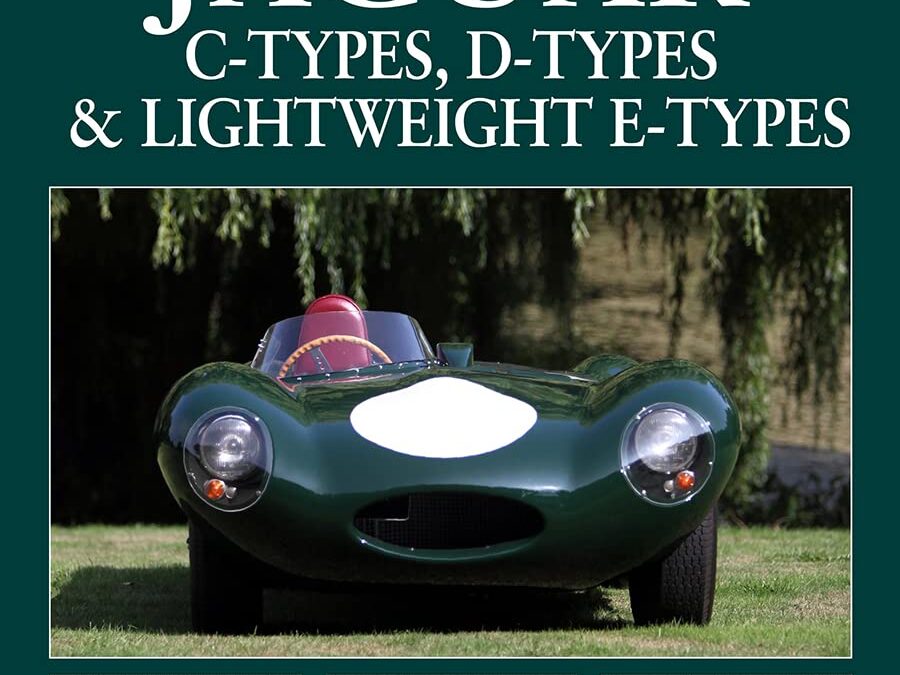
Expanded new edition
The first edition of the present book was published in 2014 and was quickly acclaimed as the bible of the classic Jaguar racers. This greatly expanded new edition runs to more than 400 pages and contains 500 illustrations. It brings the individual stories of over 150 cars up to date, and includes additional useful information and appendices. Today the name of Jaguar still ranks high in the pantheon of British cars that have won the Le Mans 24-hour race. A mere 20 years since the birth of their first car, Jaguar had become the leading high-performance car in Britain thanks to the revolutionary XK engine, and the XK120 was in its day the fastest production car in the world. While the company had begun to earn its spurs in motor racing, it was a bold step to build a new car with the specific intention of entering Le Mans, at the time the most famous motor race in the world. Remarkably, the new Jaguar C-type succeeded in winning at Le Mans on the first attempt. A further four Le Mans victories followed: in 1953 for the C-type again, and then three wins for D-types from 1955 to 1957, by which time the Jaguar works team had been withdrawn from racing. Private entries of Jaguar C- and D-types in other races continued for many years. The E-type was never as successful in racing, since it was conceived as a GT road car rather than a racer, but the small run of lightweight cars and other competition versions added further lustre to Jaguar’s reputation. C- and D-types were sold in some numbers to private owners on both sides of the Atlantic, many of whom obviously used them for racing, but unlike most later sports-racing cars they could still be used on the road. This was and remains one of their many attractions. Virtually all the cars have survived, and in recent times have seen a steady increase in value. This updated, enlarged and comprehensive new edition of the Register is a tribute to these glorious cars, to the people who were involved in their design and production, and to the drivers who campaigned them.
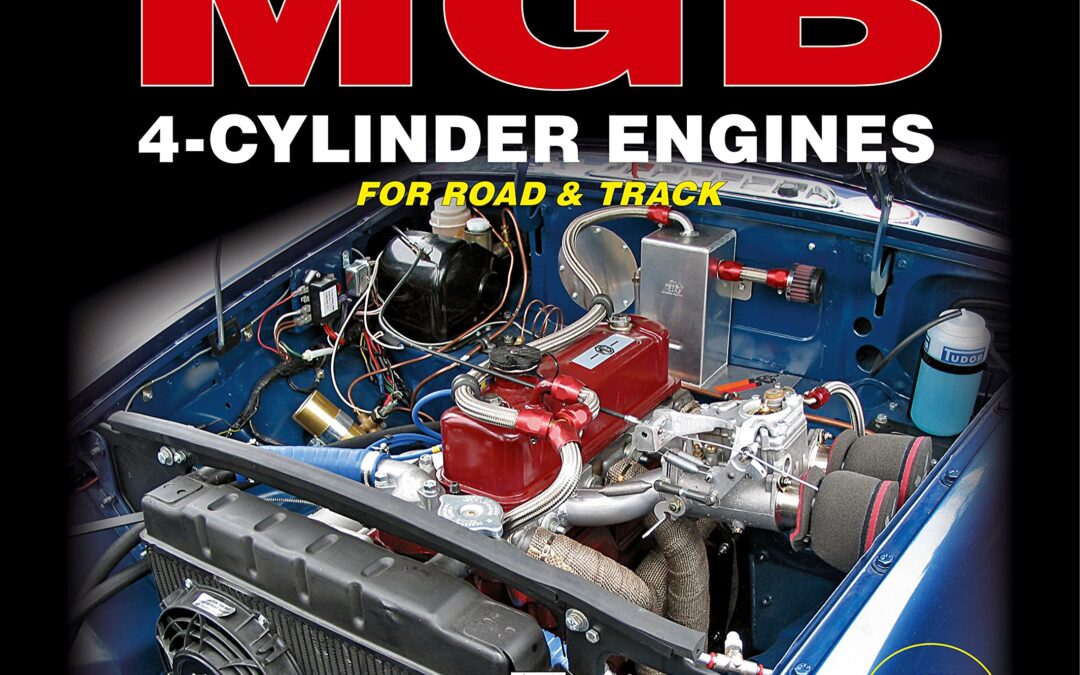
How to get maximum performance from the MGB’s four-cylinder B-series engine for road or track.This book tells you all you could want to know, expert tips, and is packed with understandable and down-to-earth advice based on the author’s years of hands-on experience. ·Covers all MGB and MGB GT 4-cylinder engines (except 3-bearing crank engines) ·Explains the ‘first principles’ of engine power and tuning ·Handy ‘power recipes’ to help achieve the performance you want ·How to improve airflow, camshafts, carburation, ignition and exhaust ·Lubrication and cooling systems improvements ·Uprating suspension, wheels, tyres and steering for better handling ·How to set-up and tune on a rolling road ·Comprehensive appendix with formulae and tuning data ·Includes cam timing tables for Piper and Kent cams ·List of specialists and suppliers to help with your MGB tune. Written by an acknowledged expert, who runs a well-known tuning business in Derbyshire, England. Peter Burgess has been working with MGBs since 1978 and his engine building expertise has produced many MGB race wins. He is also the author of How To Build, Modify & Power Tune Cylinder Heads.
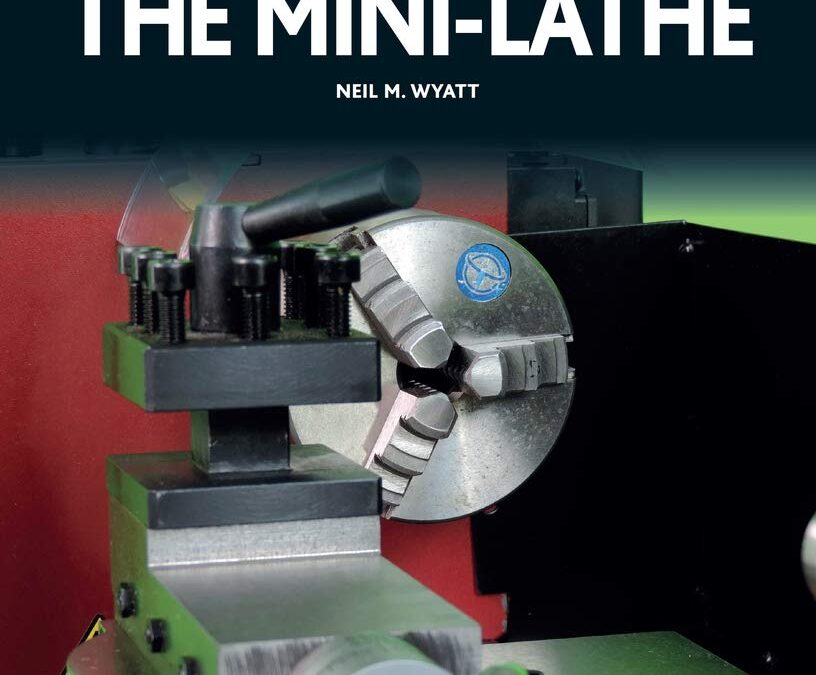
The mini-lathe is a useful tool in the model engineer’s workshop. With more choice than ever of more compact machines, a mini-lathe is able to accommodate a wide range of engineering requirements, projects and techniques, as well as being suitable for the novice engineer and for those with limited workshop space. Author and model engineer Neil Wyatt provides a practical guide to purchasing and using a mini-lathe, as well as examining more advanced techniques. The book includes a projects section to show the application of mini-lathe techniques. Topics covered include: choosing a mini-lathe; workshop safety and setting up the lathe; basic through to more advanced machining skills and finally, modifications, additions and tuning of the mini-lathe.
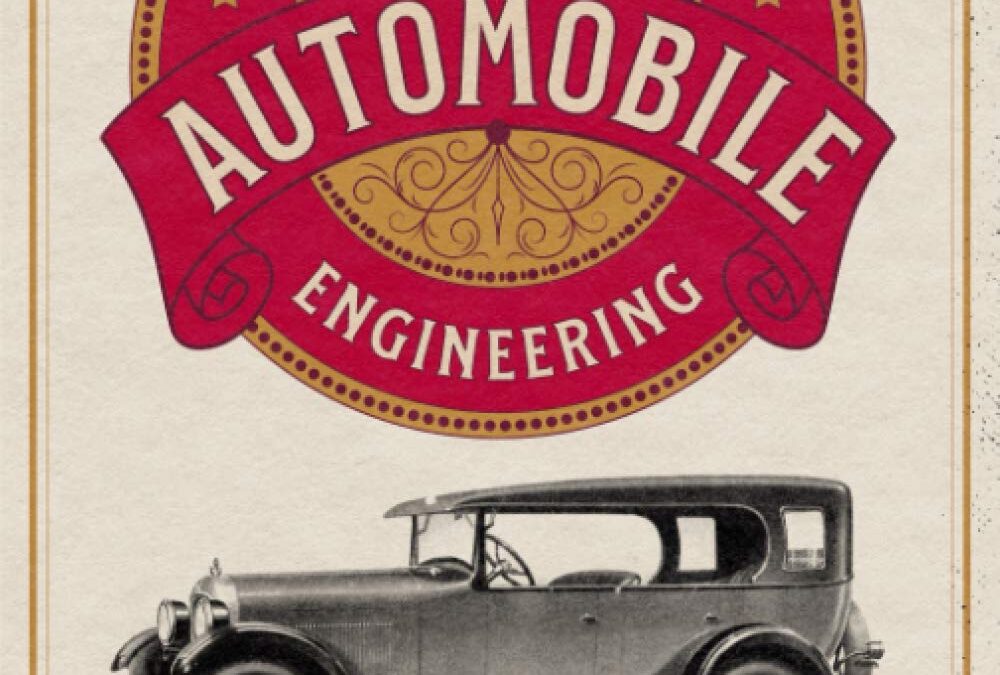
Volume 5 concludes the in-depth five-part series with detailed antique car wiring diagrams, data sheets, and a thorough look at classic electrical systems.
The Classic Cars and Automobile Engineering series spans five volumes with more than 1500 images and diagrams for enthusiasts, collectors, and mechanics. Volume 5 includes:
– Digitally restored images and diagrams
– Big 7” x 10” pages
– Easy to read writing style
– Author’s original page layouts
– Classic type font and hand-drawn lettering
– Bold retro-style cover
Everything that you ever wanted to know about the inner workings of antique cars, trucks, bikes, engines, tractors and more are included in this expansive tome of knowledge. Originally printed in 1926, this vast wealth of knowledge for classic car lovers was digitally restored and enhanced by writer-historian Mark Bussler and the CGR Publishing Restoration Workshop for a new generation of automobile enthusiasts.
This detailed, illustrated book collection is a must-have reference guide for all owners of period automobiles, motorcycles, airplanes, and anything powered by early 20th-century engines. Enlarged and printed on large 7” by 10” pages, The Classic Cars and Automobile Engineering series is designed for easy reading in the shop or library. Volume 5 focuses on electrical systems, wiring diagrams and data sheets.
Included subjects: How to read wiring diagrams – symbols – charts – generators – lamp voltages – dimming devices – electric horns – ignition timing – spark plugs – distributors – currents – methods of regulation – proper conduction – hydrometer tests – low battery – electric gear shifts – and more.
Includes wiring diagrams and datasheets for Apperson, Buick, Cadillac, Case, Chalmers, Chandler, Chevrolet, Chrysler, Cleveland, Cole, Cunningham, Davis, Dodge, Dort, Duesenberg, Durant, Essex, Ford, Flint, Franklin, Gardner, Gray, Haynes, Hudson, Hupmobile, Jackson, Jewett, Jordan, Kissel, LaFayette, Lexington, Lincoln, Marmon, Maxwell, Mercer, Moon, Nash, National, Oakland, Oldsmobile, Overland, Package, Paige, Peerless, Pierce-Arrow, Rco, Rickenbacker, Rollin, Rolls-Royce, R&V Knight, Star, Stephens, Studebaker, Stutz, Wills Sainte Claire, Willys-Knight, and Winton.
Table of contents:
– Chapter 1: Reading Wiring Diagrams and Auxiliary Electrical Equipment
– Chapter 2: Wiring Diagrams and Data Sheets
– Chapter 3: Summary of Electrical Principles
– Chapter 4: Ignition Instructions
– Chapter 5: Generators
– Chapter 6: Wiring Systems
– Chapter 7: Battery
– Chapter 8: Glossary of Automobile Terms
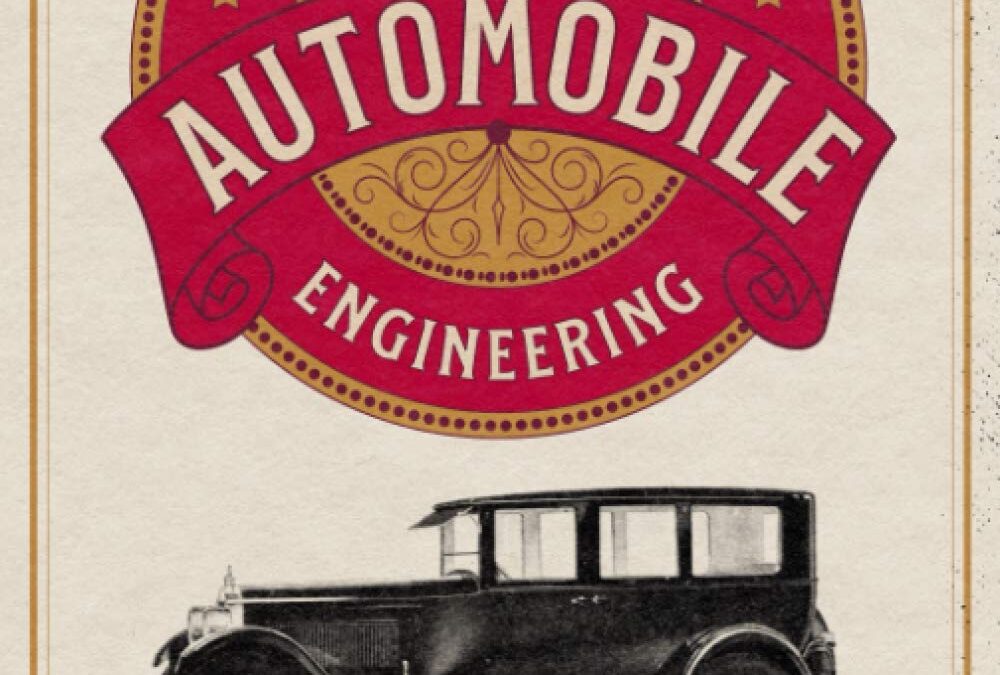
Volume 3 in this illustrated five-part series highlights antique motorcycles, tractors, airplane engines, period welding techniques, and Q&A.
The Classic Cars and Automobile Engineering series spans five volumes with more than 1500 images and diagrams for enthusiasts, collectors, and mechanics. Volume 3 includes:
– Digitally restored images and diagrams
– Big 7” x 10” pages
– Easy to read writing style
– Author’s original page layouts
– Classic type font and hand-drawn lettering
– Bold retro-style cover
Everything that you ever wanted to know about the inner workings of antique cars, motorcycles, engines, tractors and more are included in this expansive tome of knowledge. Originally printed in 1926, this vast wealth of knowledge for classic car and bike lovers was digitally restored and enhanced by writer-historian Mark Bussler and the CGR Publishing Restoration Workshop for a new generation of automobile and classic motorcycle enthusiasts.
This detailed, illustrated book collection is a must-have reference guide for all owners of period automobiles, motorcycles, airplanes, and anything powered by early 20th-century engines. Enlarged and printed on large 7” by 10” pages, The Classic Cars and Automobile Engineering series is designed for easy reading in the shop or library. Subjects covered in Volume 3 include antique motorcycles with illustrations of classic Harley-Davidson models such as the Twin-Cylinder Three-Speed Motorcycle, Thor lightweight bikes, The Merkel Motorcycle, Dayton Motor Bicycle, a detailed Excelsior Motorcycle diagram, and more.
Aviation engines are covered in detail from manufacturers such as King-Bugatti, Curtiss, Liberty, Packard, and Sunbeam. Tractors, air-cleaners, oils, ignitions, workbenches, blowtorches, micrometers, tool grinding, drill presses, gases, arc welding, types of welds, after-treatment, and much more are covered with numerous detailed illustrations.
Table of contents:
– Chapter 1: Motorcycles
– Chapter 2: Aviation Engines
– Chapter 3: Gasoline Tractors
– Chapter 4: Shop Information
– Chapter 5: Oxy-Acetylene Welding Practice
– Chapter 6: Questions and Answers
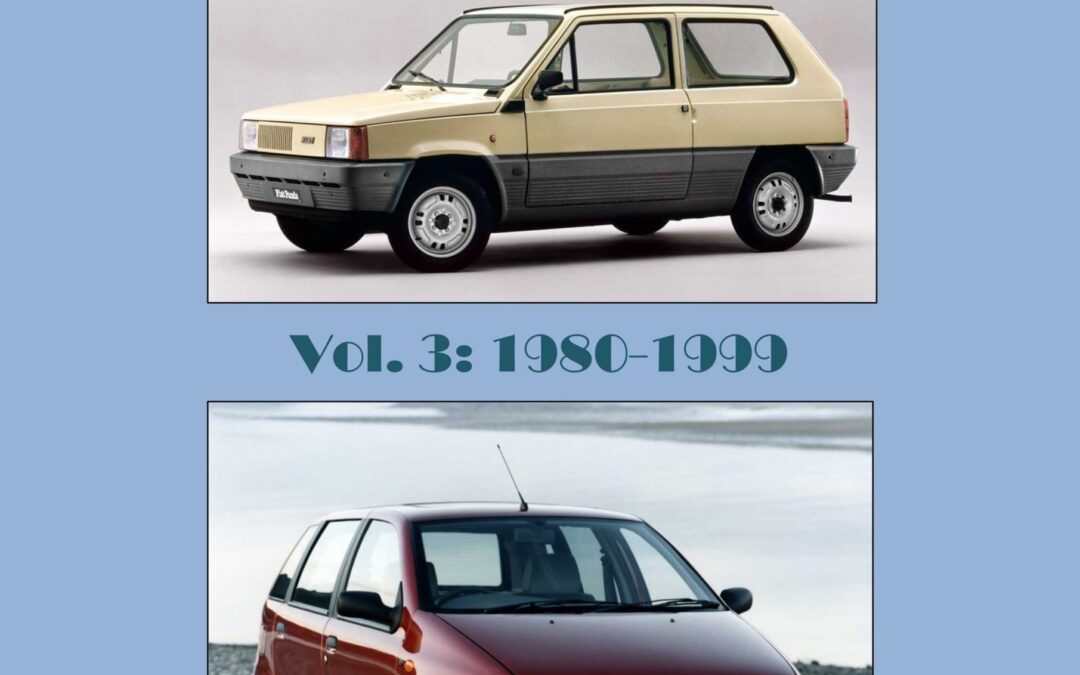
Fiat – Twenty More Years Volume 3 is the final volume on 100 years of Fiat automobiles. A4 format, soft colour covers, 125 pages with 3-4 images per page. Includes Image Credits, References, Bibliography and an Index covering all three volumes, 1899-1999.
This volume covers a period when rapid changes were taking place throughout Europe, including the collapse in 1989 of the USSR’s control of its eastern European empire, the Iron Curtain states of Poland, Hungary, Romania, Czechoslovakia, Bulgaria and the DDR – East Germany. This was almost immediately followed by the collapse of the USSR itself.
New cars were being launched by Fiat, including the iconic Panda, the Uno, Tipo, Regata, Punto, Barchetta, Coupe, Cinquecento and Seicento, Bravo and Brava, Ulysse, Palio and finally the ‘ugly duckling’ Multipla. All Fiats were now front-wheel drive, the old 131 and Argenta rear-wheel drive cars were consigned to history.
Many changes took place within Fiat itself, with Gianni Agnelli searching for a family member able to take over from him when he retired. Several family members were groomed because Gianni’s only son, Edoardo, proved to be a dilettante and incompetent. Agnelli and his Rottweiler, Cesare Romiti, faced down the powerful Italian unions in a battle for control of the company in the face of strikes and social unrest, with Fiat unable to make the numbers of cars they wanted and the quality of those cars suffering as a result of inattention by workers on assembly-line. Automation was progressed as a result, eliminating many jobs. Nevertheless, this twenty-year period produced many sought-after Fiat models which are now regarded as classics.

Stock-car racing star, country singer, and sports broadcaster Kyle Petty shares his familial legacy, intertwined with NASCAR’s founding and history, in Swerve or Die―written with Pulitzer Prize-winner Ellis Henican, the New York Times bestselling coauthor of In the Blink of an Eye.
“Born into racing royalty. The only son of NASCAR’s winningest driver ever. The grandson of one of the sport’s true pioneers. The nephew of our very first Hall of Fame engine builder. It’s quite a family to represent, and through it all, I’ve somehow managed to keep being Kyle.”
Kyle Petty won his very first stock-car race, the Daytona ARCA 200, in 1979 when he was eighteen. Hailed as a third-generation professional NASCAR racer, he became an instant celebrity in circles he had been around all his young life. Despite being the grandson and son of racing champions Lee Petty and Richard Petty, Kyle didn’t inherit innate talent. Working in his family’s North Carolina race shop from an early age, he learned all about car mechanics and maintenance long before he got behind the wheel. And although Kyle continued the family business, driving “Petty blue” colored cars emblazoned with his grandfather’s #42―a number once used by Marty Robbins―his career took a different route than his forebears’.
In Swerve or Die: Life at My Speed in the First Family of NASCAR Racing, Kyle chronicles his life on and off the racetrack, presenting his insider’s perspective of growing up throughout the sport’s popular rise in American culture. In between driving and running Petty Enterprises for thirty years, Kyle took some detours into country music, voiced Cal Weathers in Pixar’s Cars 3, and started his annual motorcycle Kyle Petty Charity Ride Across America. And when his nineteen-year-old son Adam, a fourth-generation racing Petty, tragically lost his life on the track, Kyle founded Victory Junction, a camp for children with chronic and serious medical conditions in Adam’s name―with help from Academy Award-winning actor and motorsports enthusiast Paul Newman.
Filled with NASCAR history, stories of his family’s careers, and anecdotes about some of stock-car racing’s most famous drivers, Kyle’s memoir also tackles the sport’s evolution, discussing how welcoming diverse racers, improving car and track safety features, and integrating green technology will benefit NASCAR’s competitors and fans in the future.
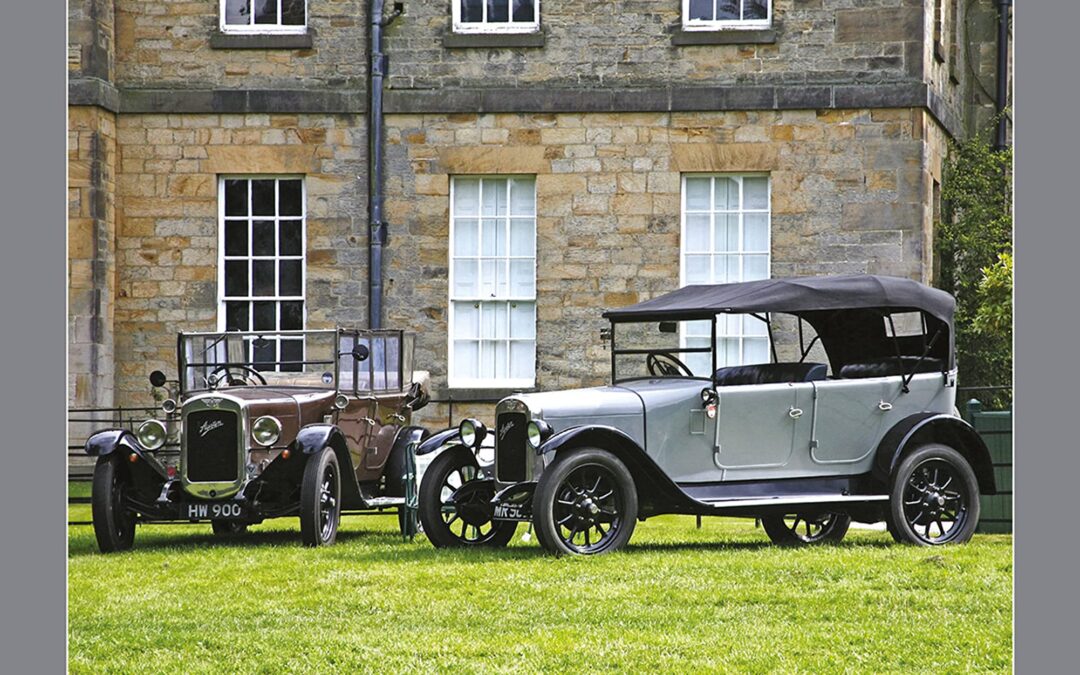
Until now there has been no in-depth book about the Austin 12/4. This most worthy of cars epitomised Herbert Austin’s philosophy that his cars demonstrate longevity, robust construction, sound engineering and good value for money.
Here we have the story behind the model’s introduction, contemporary press reports, early advertisements, from the first brochures issued up to 1934-35, the various body styles available. Those which were exported as chassis to New Zealand and Australia and then bodied locally are also included. The taxicabs have a section to themselves, as does the different coachwork available from various coachbuilders – including the work they undertook during the war.
When many cabs dating from the thirties were pensioned off in the early fifties, they took on many other roles, and Jim details some of them. Separate chapters are reserved for 12/4s which have earned their own special place in the Austin Twelve’s history; these include “Peggy”, the cab featured in the film Carry on Cabby, and “Gumdrop”, the tourer immortalised by the late Val Biro.
The Austin 12/4 has survived in respectable numbers, and if you are wondering why, Jim’s book will leave you in no doubt. Everything you need to know about the Heavy 12/4 Austin, including stories of restorations, is in this book. In 2022 we celebrate the centenary of the addition of this model to the Austin range.
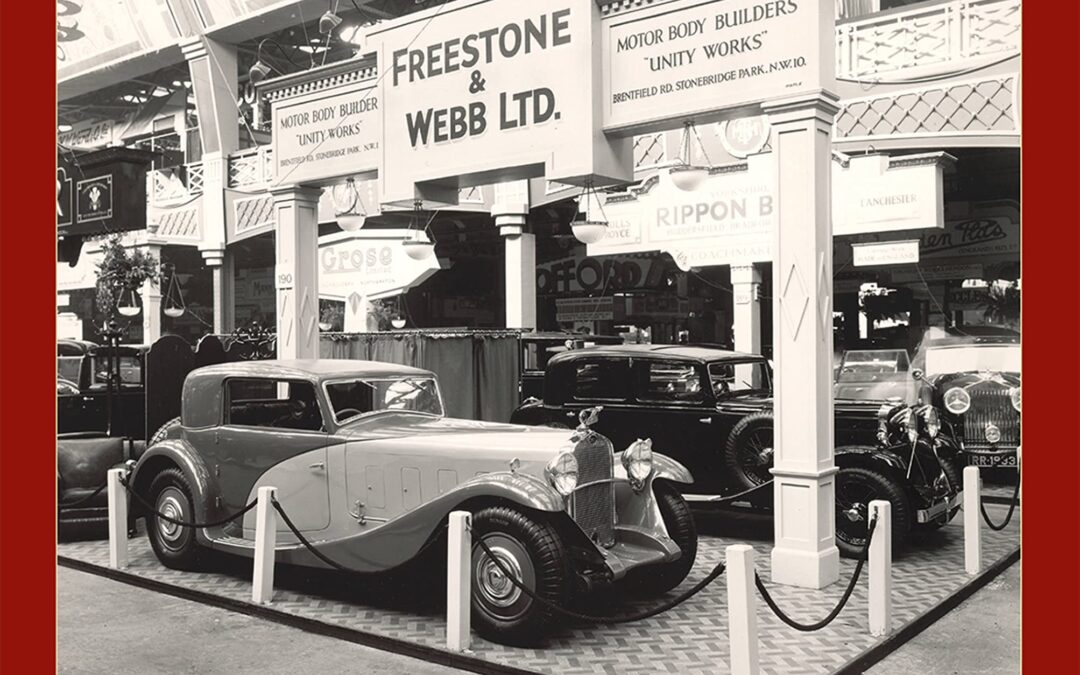
Freestone & Webb was a great name in British coachbuilding for some 35 years, but as demand for coachbuilt car bodies dried up in the 1950s, the company became the first of the Big Five remaining specialists to close down.
They had started in the early 1920s, as the motoring scene was settling down after the upheaval of the First World War. Early devotees of lightweight Weymann construction, they soon earned the approval of the nearby Bentley company because their bodies did not unduly hinder the performance of these great sporting chassis. Before long, Rolls-Royce models were also being provided with stylish and well-made Freestone & Webb coachwork, and so were many leading foreign chassis, such as Mercedes-Benz and Packard.
Although the partnership of Messrs Freestone and Webb was dissolved before the 1930s had got under way, the company survived the bleak years at the start of the decade and continued to build both arrestingly beautiful bespoke bodies and distinctive coachwork in small-volume batches. Most notable in this period was their razor-edge style, which was rapidly copied by many other coachbuilders and would remain influential into the early 1950s.
Like others, the company struggled to get back into the game after an enforced layoff during the Second World War. But with the aid of good designs and fine workmanship, they survived into the 1950s with their reputation intact. Sadly, their continued survival could only be a matter of time, and Arthur Webb was already looking to sell the company when he died in 1954. Freestone & Webb continued gamely for four more years, experimenting with new designs and going out in a blaze of glory with their extravagant Honeymoon Express for a Rolls-Royce Silver Cloud.
This is the story of a great British coachbuilder, told with the aid of meticulous research and with great affection for the grandeur and style that its products still represent.
















